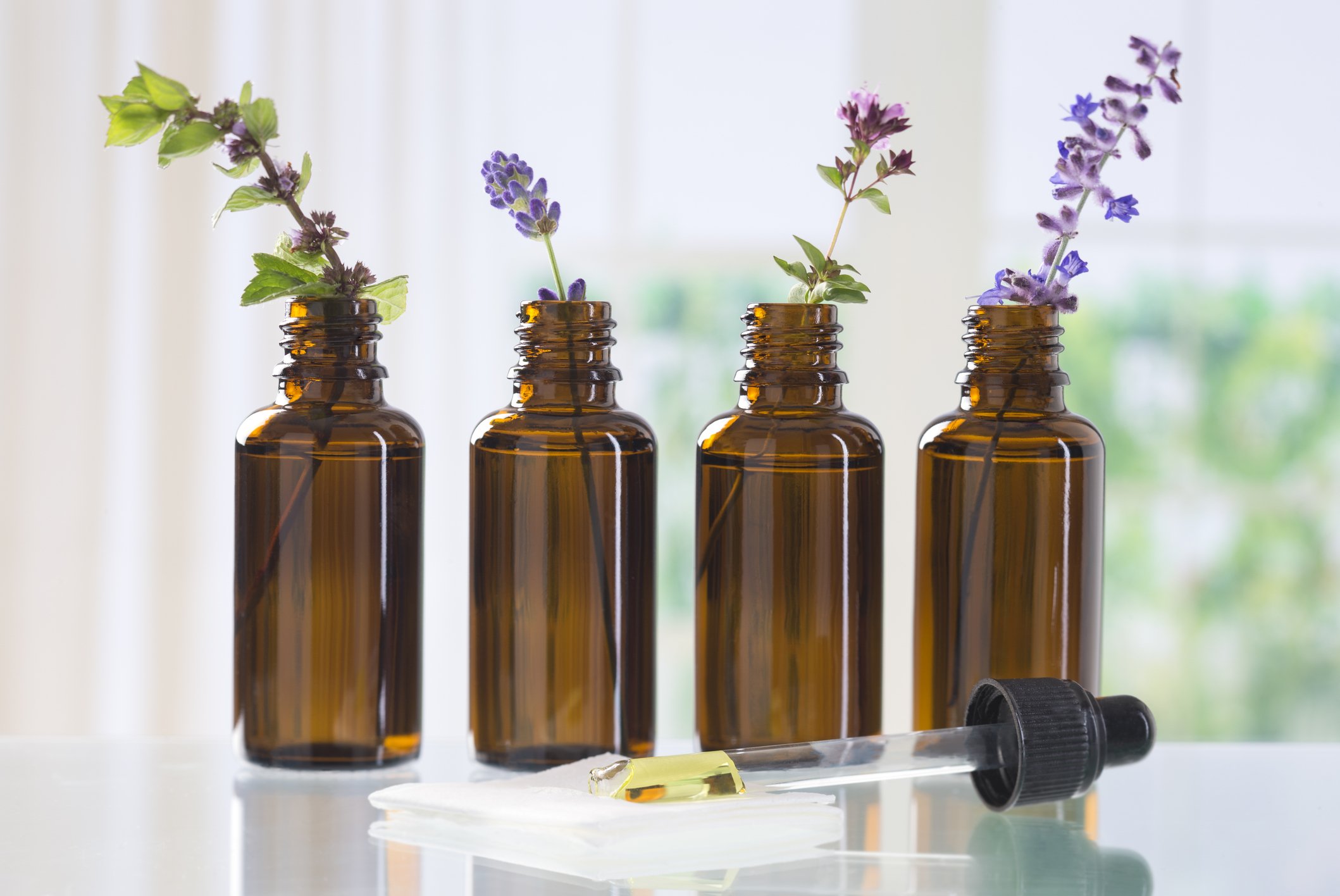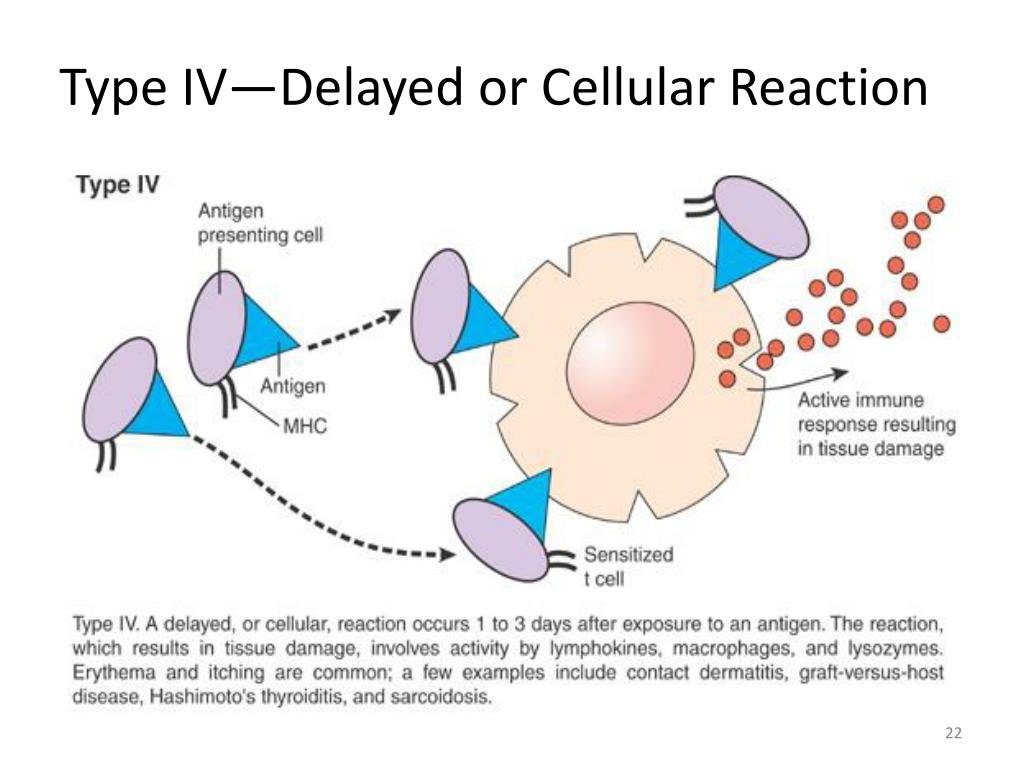Debunking 10 Common Essential Oil Myths
I love a great eye-catching, thought-provoking fact! One that fascinates my inner wonder and helps me rethink a topic in a new way. In today’s era of knowledge at our fingertips, it seems there are facts everywhere about everything. Interesting facts spread like wildfire on social media outlets. Often times, when I look into the fact, it is not backed by science, or worse, the research is not interpreted correctly.
The essential oil community is no different. It seems there are quite a few blanket statements surrounding aromatherapy and the use of essential oils. A blanket statement is a statement that is vague asserting a premise without providing evidence. There is no data or research studies to prove the statement. Sadly, I have encountered many of these statements in popular books about essential oils from well-known authors. It is like the childhood game of telephone where one person states something that likely is true and then the message gets twisted and lost somewhere in the middle.
As a Certified Aromatherapist and Registered Nurse, I have always enjoyed reading research studies and understanding the science behind a topic. The essential oil world contains a wealth of information on how to use aromatherapy to promote holistic health, however, there is a great deal of misinformation that circulates the internet. I wanted to take a few minutes and clear the air on 10 common essential oil myths that have gained hype throughout the years.
Myth: Essential oils are the lifeblood of plants
Comparing how essential oils work in the plant to how blood works within the human body is not a great comparison. Essential oils are not the “blood” of plants. Blood transports gases like oxygen and carbon dioxide as well as various nutrients. It also helps the body eliminate metabolic waste, transports hormones, regulates the immune system and bodily defense, and maintains homeostasis of the body.
Plants are structured in a way to depend on air, soil, water, and sunlight. This chemical activity results in primary metabolites (such as proteins, enzymes, and chlorophyll) which are vital to the plant’s life. Essential oils are the secondary metabolites. They are the end product of the plant’s metabolism. A more appropriate comparison would be is that essential oils are the “life sweat” of the plant but even then there are some problems with that comparison. Life sweat just isn’t quite as romantic as saying “lifeblood”. In conclusion, essential oils are not vital for life within the plant similar to how blood works within the human body. However, essential oils are still very important for the plant for predatory defense, disease resistance and attracting pollinators.
Myth: Essential oils are natural; therefore, they are safe.
I often feel the “wellness world” is fed this idea that “natural is always safe.” When used appropriately, natural components tend to be gentle and safe to use, however, it is important to remember that something natural doesn’t necessarily make it safe under all circumstances.
There are many examples of this in nature:
Ingesting too much water can be fatal
Excess salt causes increased blood pressure and dehydration
Mushrooms, green potatoes, apple cores, St. John’s Wort can be toxic.
Flowers such as foxgloves contain several chemicals that can be toxic through absorption of the skin and ingestion
Just because something is natural doesn’t make it safe under all circumstances. Essential oils are extremely potent and concentrated, therefore it is important to use them appropriately and safely.
Essential oils are safe:
When used appropriately for the right person considering age and health conditions.
In the appropriate route of administration and in safe dilution for the specific individual.
When used for appropriate length of time and intensity of treatment depending on the person’s needs.
It is always important to dilute further or discontinue use of essential oils if experiencing an adverse reaction. This brings me to the next myth….
Myth: You cannot have an allergic reaction to an essential oil
Allergic reactions to essential oils are possible just like with coconut oil, sesame oil or vanilla extract! The body views something as an invader and attacks it and then activates an immune response. It is true that essential oils do not contain proteins. However, essential oil constituents often chemically bind to proteins in the skin (this is called “hapten-peptide complex) and this can cause an allergic reaction.
Some people get confused and label essential oil reactions as not “true allergic reactions." because they are not IgE mediated reactions which happen with food allergies, seasonal allergies and drug allergies. This is a Type 1 Allergic Reaction and this is only one type of allergic reaction that is possible to occur within the body. There are 4 classes of allergic reactions. Type IV is a delayed hypersensitivity reaction which the immune system involvement occurs through T cells. T cells are a lymphocyte produced and processed by the thymus gland that actively participate in the immune response. This is the type of allergic reaction that can occur with essential oils. This is why it is important to use a lower dilution of essential oils as well as rotate your oil use.
This brings up another question on this topic:
If someone is allergic to a plant, will they also be allergic to the essential oil?
Some people tolerate essential oils of plants they are allergic; however, it is still advised to use extreme caution. Use the essential oil in very small amount and/or perform a patch test prior to use. There is a risk of cross allergenicity between plants and their essential oils.
Nebulizer Diffuser
Myth: Essential oils are chemical free.
I completely understand the commitment to creating a home without harsh chemicals and choosing low toxicity products. Often, there is some confusion portraying essential oils are a “chemical-free” lifestyle. Essential oils are made up dozens to sometimes hundreds of chemical constituents. Everything in life is a chemical because everything is made of matter. This includes your body. So is your dog, your chair, the trees and grass, the air, your water, and your dinner. Anything that has mass and occupies space is matter. Matter consists of particles that are broken up in molecules and atoms. This includes essential oils. It is not possible to live without chemicals.
Myth: Essential oils should be used undiluted to experience the full benefits.
Some people believe that carrier oils dilute the essential oils therefore lessening the ability of the essential oils to work. The word “dilute” can give the wrong impression that essential oils are then “less concentrated” and therefore don’t work as well.
Carrier oils do not lessen the therapeutic benefits of essential oils; instead, they spread essential oils further on the skin and can actually help your body absorb them faster and more efficiently. Essential oils are highly volatile and evaporate quickly. Carrier oils are heavier and do not evaporate; instead, they fully absorb into the skin. Because essential oils are incredibly concentrated, it’s important to use a carrier oil to protect the skin and reduce risk of adverse effects and sensitivity.
Myth: Candles release VOCs and essential oils don’t.
Volatile organic compounds (VOCs) are chemicals that both vaporize into air and dissolve in water. Are essential oils volatile organic compounds? Yes. Volatile organic compounds are everywhere! Ripe banana, carpet, couch, crayons, candles, take a walk outside, anything with an aroma releases VOCs, and that includes essential oils. There are some VOCs that are considered more toxic than others especially when exposed in excess like formaldehyde, benzene, diesel, petrol, gasoline etc. Is there research to show that running an essential oil diffuser in a large well-ventilated space exposing one to toxic levels of VOCs? As of right now, there is no data that shows this. There is also no data to show that diffusing essential oils disrupts the microbiome.
Myth: If an essential oil label states 100% pure, the contents are 100% pure.
The essential oil industry is not regulated therefore companies may label bottles with claims of being “100% pure” even if they contain a small percentage of essential oil, contain additives OR contain synthetic fragrances. It is important to keep in mind that not all essential oils are created equal. There is no pre-product approval or accountability in the essential oil market. While many brands offer 100% pure essential oils, it is also true that many essential oils are NOT what they appear. Buy directly from the source and check back labels for botanical name, other additives, cheaper substitutes and fragrances.
Myth: If you experience a headache when diffusing, you are detoxing.
If you ever experience a headache while diffusing, turn off the diffuser, get fresh air, and drink water. While headaches do have a wide range of etiologies (dehydration, sleep, stress, hormones, etc.), they can also be caused by overexposure to essential oils. Extended duration in small spaces could trigger a headache. This tends to be much more likely to occur with synthetic fragrances. It is also true that when experiencing a headache, 40-50% of migraine and headache sufferers report a change in olfactory perception and experience aroma aversions. (1) We tend to be much more sensitive to smells when battling a headache.
Myth: Witch hazel will adequately mix essential oils in water
Essential oils are lipophilic and hydrophobic, meaning they dissolve and mix in lipids and oils and are water-repelling. Because of this, when essential oils are added to water, they will float on the top of the water and adhere to anything to get away from the water, such as the sides of a glass or the skin (if taking a bath). To combine essential oils and water, we must add a proper solubilizer. Witch hazel is NOT an adequate emulsifier or a solubilizer. It will not mix essential oils with any water-based product. In addition, witch hazel is not a preservative. If wanting to make a room spray with essential oils consider filling 1/4 of the bottle with high proof alcohol before filling the rest with distilled water. Or use a proper solubilizer on the market. My favorite is Solubol.
Myth: Essential oils take 22 seconds to reach the brain, 2 minutes to be found in the blood stream, 20 minutes to affect every cell in the body.
This statement sounds so exciting and incredible doesn’t it? However, this is a blanket statement and there is no data or research studies to prove this. (And trust me I have looked!)
Let’s go over each section of this statement:
It takes 22 seconds to reach the brain: This should actually take a lot less time than 22 seconds! Open up an essential oil bottle and it takes milliseconds for an odor molecule to bind to a receptor and travel up the olfactory bulb to the forebrain to relay signal for processing. I can detect and recognize the aroma the second I open an essential oil bottle not 22 seconds later. This will also differ from person to person.
It takes 2 minutes to be found in the bloodstream. This is possible but there are quite a few variables that influence absorption rate:
1) Compound: size, lipid partition coefficient
2) Skin: part of the body, thickness, temperature, damage, hydration, metabolism
3) Vehicle: solubility, volatility, pH
4) Dose: concentration, total skin area, duration of exposureIt takes 20 minutes to affect every cell within the body. Is this even possible? Let’s look at the science.
Chemistry lesson time: the human body is composed of around 40 trillion cells. Essential oils are composed of around 132 quintillion molecules per SINGLE drop. (1 drop = 30mg) Because their molecules are extremely small, they are able to pass through tissues and directly into our cells. However, for it to affect every cell within the body, it would need to absorb within a rate of 4 million molecules of essential oil per cell in the body at 100% absorption. Again, absorption is influenced by several factors stated above.
It is possible, however, there is NO machine that can detect that one drop of essential oil would affect every cell within the body. There was a study that showed peak plasma concentrations within the body (2), but this is not the same as showing one drop is affecting every single cell within the body.
Essential oils are amazing! We don’t need to make claims that don’t have science to back them to make points. Let the oils and existing research speak for themselves!
Want to learn more about using essential oils? Check out my latest book Science of Essentials: The Essential Guide for Using Aromatherapy to Promote Health and Healing here.
New to essential oils? See my blog article, 10 things I wish I knew about essential oils when I started.
Disclaimer: This blog is for general informational purposes only and does not constitute the practice of medicine, nursing or other professional health care services, including the giving of medical advice. The use of information on this blog or materials linked from this blog is at the user's own risk. The content of this blog is not intended to be a substitute for professional medical advice, diagnosis, or treatment. Users should not disregard, or delay in obtaining, medical advice for any medical condition they may have, and should seek the assistance of their health care professionals for any such conditions.
References:
Blau JN, Solomon F. Smell and other sensory disturbances in migraine. J Neurol. 1985;232(5):275-6.
Jager W, Buchbauer G, Jirovetz L, et al. Percutaneous absorption of lavender oil from a massage oil. J Soc Cosmet Chem. 1992;43(1):49-54




